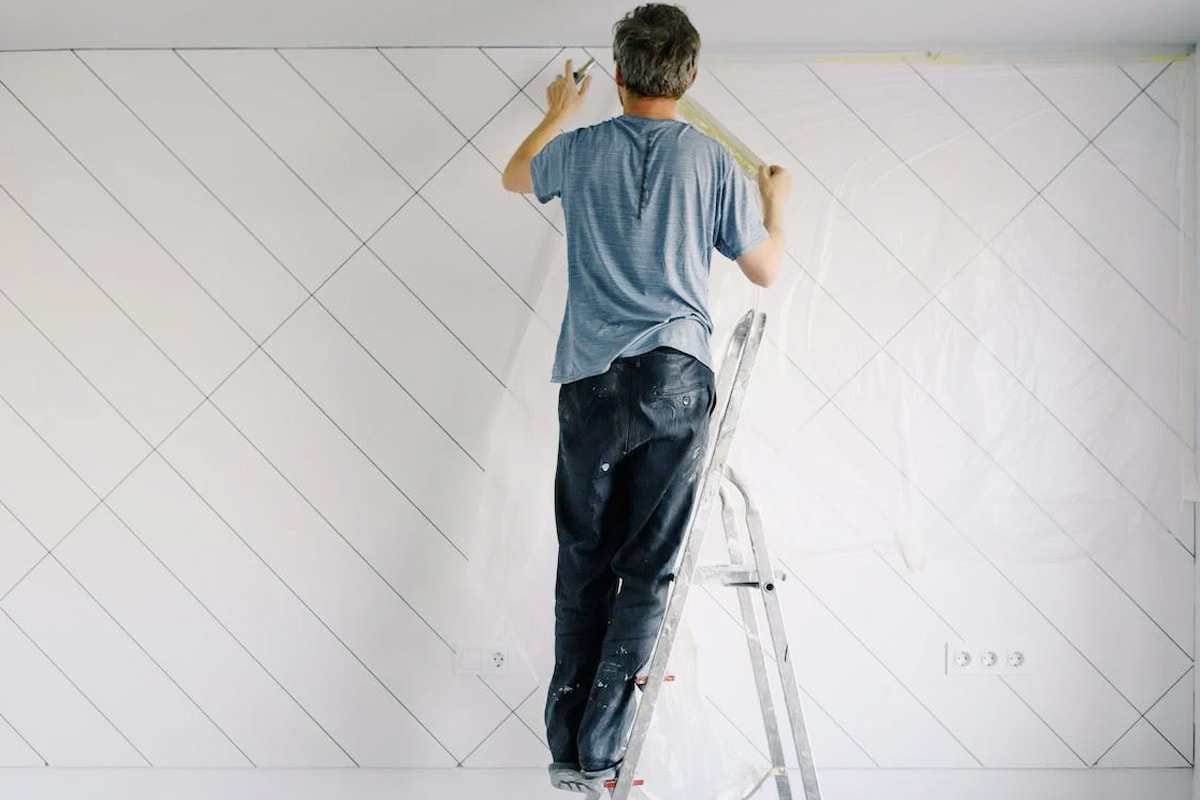Everything about Plasterer
Wiki Article
The 6-Minute Rule for Plasterer
Table of ContentsPlasterer Things To Know Before You BuyThe smart Trick of Plasterer That Nobody is DiscussingThe smart Trick of Plasterer That Nobody is Talking AboutThe Definitive Guide for Plasterer
The plastering team requires to bring their own tools and also equipment as well as sometimes supply their very own grain (Plasterer). The Tasks that the plasterer is generally expected to complete.

In position where greater than one edge fulfills; the grain's ends are reduced at an angle and also the 2 or even more suggestions are put as close together as permitted; touching but not overlapping. The grain is entirely covered with plaster in addition to the rest of the wall as well as the plaster likewise helps to hold it strong.
This leaves a tidy, straight looking corner. An alternative approach seen in older homes of developing a rounded or bullnosed edge uses a quirked wood personnel bead. The team grain, a 1-inch dowel with approx 1/3 slashed off the back, is established on the outside corner by the joiner on website, attached to wood plugs set right into the brick/block seams, or to the timber frame.
Plasterer Can Be Fun For Everyone
The quirk will certainly conceal the eventual little split that will create in between the staff bead as well as plaster. The plasterer requires to fill a 5-gallon container partway with water. From this pail he hangs his trowel or trowels and also places into it numerous devices. Typically a plasterer has one trowel for "laying on" (the procedure of putting mud onto the wall surface).A lay-on trowel has a tendency to be also level for this and the vacuum triggered by the water can argue the wall surface, compeling him to tear it off and also thus he has to rework the area. Lastly, one might have a brand-new trowel "not yet broken-in" which he will utilized for "grinding"; this is when the plaster is almost solidified as well as he is smoothing out any kind of bumps or filling out any kind of small dips (feline deals with) to make the wall surface appear like a consistent sheet of glossy white plaster.
some possess trowels as big as 20 inches long however the norm seems to be a 16"5". From my experience the preferred brand is a Marshalltown stainless-steel. They have a brassy luster to them, a rubber handle and will not match or rust if inadvertently left in water over night while others like a routine steal trowel which needs more maintenance yet lasts for rather a very long time and the pitting can offer it a "attack" that aids when "completing" (the last pass when the plaster is setting).
These device pails are very first kept near the mix table as well as website here then as the plaster begins to establish are moved closer to the wall surface that is being worked on. Time ends up being a big variable right here as once the plaster begins to solidify (set) it will certainly do so fairly rapidly and also the plasterer has a little margin of error to obtain the wall smooth.
Top Guidelines Of Plasterer
Any particles in the plaster can become a significant annoyance. Plasterers will typically separate a room, (especially a big or high-ceilinged wall) into top and also base. The one servicing top will do from the ceiling's edge to concerning tummy height and also sweat off a milk crate for an 8-foot (2.The homeowner as well as the plasterer's manager will normally choose ahead of time what designs they will certainly make use of in your house. Generally walls are smooth as well as occasionally ceilings. Usually a property owner will opt to have the ceilings use a "texture" technique as it is much simpler, quicker, and thus less expensive than a smooth ceiling.
The board feet is obtained by the hangers or estimated by the head subcontractor by counting the wallboards that are available in a market requirement of 8' to 12' long. He then adds in added expenditures for soffits and also basilica ceilings. Usually if the ceiling is to be smooth it is done initially, before the walls.
The reason for this is that usually when a ceiling is being worked with plaster will fall as well as sprinkle onto the wall surfaces. Nevertheless a texture mix does not require to be smoothed out when it begins to establish: hence a retardant such as "Cream of tartar" or sugar can be made use of to hop over to here lengthen the setting time, and also is conveniently scraped off the wall surfaces.
The Best Strategy To Use For Plasterer
another reason is that a bird is generally run along the leading corner after doing a smooth ceiling, then it is less complicated to preserve this side by doing the wall last. However a distinctive ceiling typically does not need to be birded, only combined in with a very wet paint brush.The initial thing the plasterer has a tendency to do is discuss all the mesh-taped joints of the walls he is regarding to cover; in a really slim example - Plasterer. The wallboard draws wetness out of this strip so when the plasterer discusses it once more when doing the rest of the wall it will not leave an indented joint that needs more reworking.
This conserves much needed time as this process is a race against find out the chain reaction. From the mix table the plasterer scoops some "mud" onto the facility of his hawk with his trowel. Holding the hawk in his off-hand and also his trowel in his key the plasterer after that scoops a protruding roll of plaster onto his trowel.
Report this wiki page